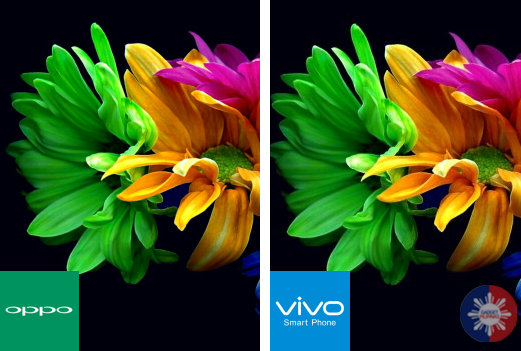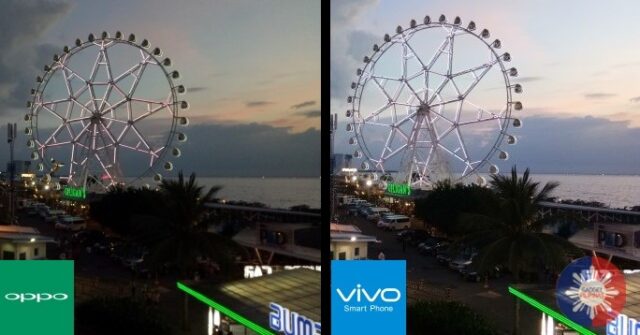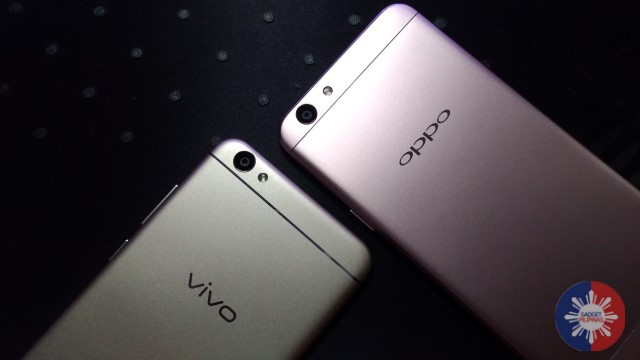For a lot of people, selfies aren’t just mere pictures, but a piece of their own world that they can share to others. And when it comes to choosing a smartphone to do the job, two prominent names always come into play, the OPPO F1s, and the Vivo V5.

What’s interesting is that these devices are almost identical not only in terms of design, but also in specs. They also belong to the same price range, and both tout themselves as the best selfie phone in the market.

So in order to settle the score once and for all, we did a full comparison of the two, not only to find out which one is better at selfies, but also which one gives you more value for your hard-earned money.
Design

In terms of looks, the F1s and the V5 are almost like twins. They both sport a glass front, and a metal back that closely resembles another familiar brand, and both their fingerprint sensors are housed by Home button.

There are a few minor differences: The V5 has slightly more thicker lines at the back, and the F1s has its volume rocker on the left side, separate from the power button on the right. The SIM card slot on the V5 is on the left side, while the one on the F1s is on the right.

The biggest difference however, is their SIM trays. While the V5 uses a hybrid, which allows you to use either a combination of a Micro SIM and a Nano SIM, or a Micro SIM and a MicroSD Card, the F1s uses a triple slot tray, which can house two Nano SIM cards and a MicroSD Card at the same time.
Verdict: Although identical in most ways, the OPPO F1s wins here though in a very small margin, thanks to the triple SIM tray which is more convenient.
Display
Both the F1s and the V5 are equipped with a 5.5-inch HD display. I loaded a couple of images to see if there are significant differences between the two.

Photo: alphacoders

Photo: alphacoders
In both instances, the V5’s display appears to be slightly brighter compared to that of the F1s. The colors on the V5’s display also appear to be more saturated, as opposed to a more natural tone in the F1s.
Verdict: Draw. There really is no clear cut winner here. Even with the slight difference in brightness and color accuracy, these alone aren’t enough to declare one device being superior to the other.
Performance
Before we dig deeper with numbers, here are the specs of the F1s and the V5:
| OPPO F1s | Vivo V5 | |
| Operating System | ColorOS 3.0 on top of Android 5.1 Lollipop | Funtouch OS 2.6 on top of Android 6.0 Marshmallow |
| Display | 5.5-inches HD | 5.5-inches HD |
| Processor | MT6750 Octa-Core 1.5GHz | MT6750 Octa-Core 1.5GHz |
| RAM | 3GB | 4GB |
| Storage | 32GB | 32GB |
| Battery | 3,000mAh | 3,000mAh |
| Interface | MicroUSB | MicroUSB |
| Camera: Rear | 13MP | 13MP |
| Camera: Front | 16MP | 20MP |
| Added Features | Fingerprint Sensor | Front-facing Flash, Dedicated Audio Chip, Fingerprint Sensor |
| Price | PhP12,990 | PhP12,990 |
As you can see, the two devices are almost identical to each other on paper. They both sport an MT6750 octa-core processor, the same amount of internal storage, and battery size. The V5 however, has more added features such as the dedicated AK4376 audio chip, which significantly improves sound quality, as well as 1GB more RAM.

In theory, it means that the V5 should perform better in heavy multi-tasking. But with daily tasks such as sending emails, watching movies and YouTube videos, listening to music, browsing the web, and even taking photos here and there, the experience was relatively the same for both devices: fast and smooth.
Let’s take a look at benchmark scores. Note that these numbers don’t always reflect the device’s real life performance.
| OPPO F1s | Vivo V5 | |
| AnTuTu | 39844 | 41300 |
| Geekbench 4 (Single Core) | 644 | 593 |
| Geekbench 4 (Multi-Core) | 2509 | 2434 |
| Geekbench 4 (Compute) | 1383 | 1327 |
| Vellamo (Chrome) | 1686 | 2667 |
| Vellamo (Metal) | 1094 | 1033 |
| Vellamo (Multi-Core) | 1539 | 2163 |
In gaming performance, both devices did well in casual games such as DJ Max Technika. On the other hand, the experience was less than ideal for heavier games such as Asphalt 8 with drastic drops in framerate in some areas, but decent enough that it didn’t take away the fun. It became obvious that these two aren’t made for the purpose, but if needed be, they can take quite a punch.
Verdict: Though with a small margin, the V5 wins here simply because it has more room for multi-tasking with an additional 1GB of RAM
Camera
Now, we’ve come to the highlight of this comparison, the camera shootout. Let’s start by comparing the rear camera shots from the two devices. Note that these were all taken in Auto mode without the use of the LED flash.

In a road with moving cars, the photo taken by the F1s looks more natural and raw. In the V5’s case however, the photo has a noticeable bluish tint (top section) which ruins the overall color accuracy.

In a less than ideal condition, the photo taken by the V5 is noticeably brighter and more detailed than the one taken with the F1s.

In the case of this plant, the photo from the F1s appears to be more vibrant and lively, while the photo from the V5 looks washed out, and falls short in detail.
Now, let’s take a look at the selfies:

 In ideal conditions, the selfie taken by the F1s appears to be sharper and contain less artifacts compared to the V5’s (Look at the water)
In ideal conditions, the selfie taken by the F1s appears to be sharper and contain less artifacts compared to the V5’s (Look at the water)


During night time, the cameras in both phones noticeably started to struggle, and in this case, the F1s showed more prowess at minimizing noise. (Look at the Ferris Wheel, and the part where there are buildings)


As the amount of light continues to decrease, so does the quality of photos from both devices.
Verdict: Hands down, the OPPO F1s is the better camera phone as it performed consistently well in almost all conditions. Photos taken from this device appear to have less processing, and exhibit a more natural vibe to them.
Software
OPPO’s ColorOS is a simple, gorgeous looking, and easy to learn user interface. It doesn’t take away from the typical Android experience you’d find in other smartphone brands.
-

- f1s int 2
-

- f1s int 1
-

- f1s int 3
-

- f1s int 4
-

- f1s int 5
-

- f1s int 6
-

- f1s int 12
Vivo’s Funtouch OS is a more unconventional approach to Android, offers a lot of room for customization, but may take a bit of getting used to for first-time Vivo users.
-

- v5 sys2
-

- v5 sys4
-

- v5 sys5
-

- v5 sys7
-

- v5 sys18
-

- v5 sys19
-

- v5 cam int3 e1483196900250 rotated
Verdict: Both UI’s are fluid, smooth, beautiful and the same in many ways, but I have to give it to Vivo on this one. Being given the ability to customize on many aspects of the software makes the device feel less of a machine, but more of a personal representation of the user. Add to that the guts to take a different approach.
Battery Life

Both the Vivo V5 and the OPPO F1s are powered by a 3000mAh battery. But during our screen test, which involved playing a video on loop at 50% brightness and 80% volume, the Vivo was able to yield an impressive 13 hours of uptime, compared to the F1s’ 9.5 hours. Regardless, both these phones should be able to last a whole day with light to moderate usage.
Verdict: The Vivo V5 wins by a considerable margin of 3.5 hours.
Final Thoughts
Both these devices are well-designed and are very capable devices for their price. As far as selfies and imaging capabilities in general is concerned, the OPPO F1s takes the throne as the selfie king. But in terms of getting more for what you pay for, it’s the Vivo V5. Choose your king!
For our full reviews of each device, please see:
Emman has been writing technical and feature articles since 2010. Prior to this, he became one of the instructors at Asia Pacific College in 2008, and eventually landed a job as Business Analyst and Technical Writer at Integrated Open Source Solutions for almost 3 years.







